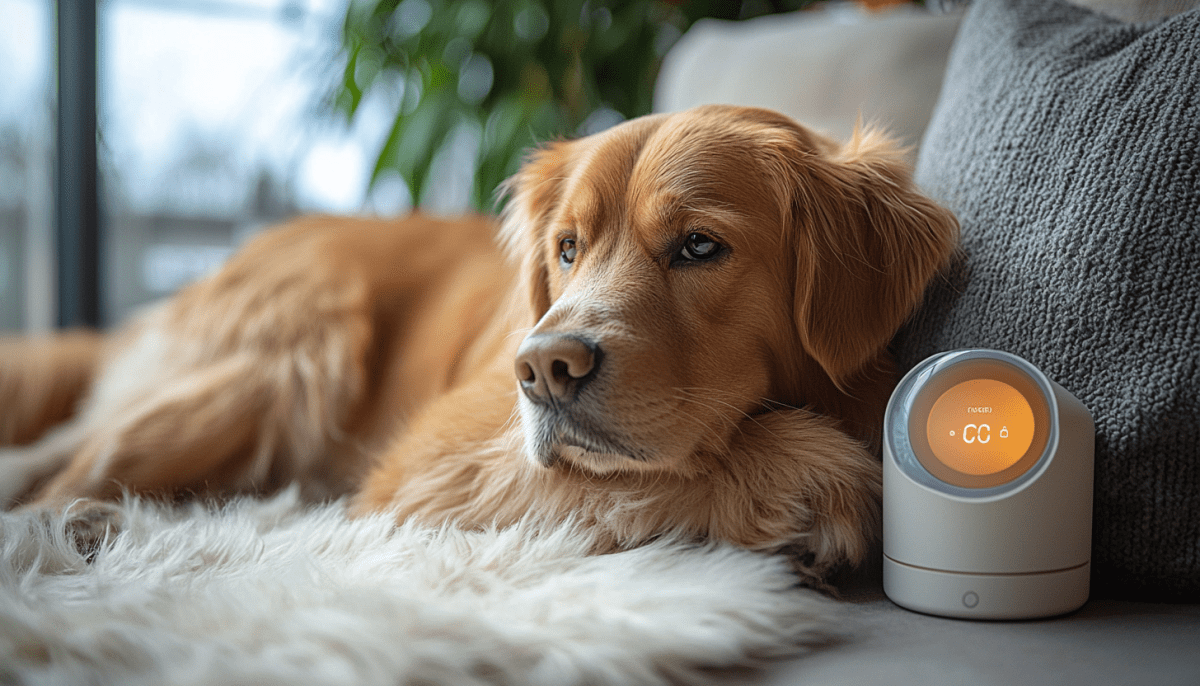When it comes to keeping your furry friends comfortable, a reliable pet temperature monitor can be a game changer. You want to make sure your pet isn’t too hot or too cold, right? There are a few key features to consider that’ll help you choose the perfect one.
First off, look for accuracy. You need a monitor that gives you precise readings. Some fancy models even track temperature changes over time, so you can catch any concerning trends. Plus, having a fast response time is super important. You want to know the temperature almost instantly, especially on those sweltering summer days or chilly winter nights.
Next, think about the display. A clear, easy-to-read screen makes monitoring a breeze. Features like backlighting help a lot if you check the monitor in low-light settings. Some monitors even come with smartphone apps, which means you can keep an eye on your pet’s comfort right from your phone!
Battery life is another important point. Eventually, you’ll want a monitor that doesn’t need constant charging. Some devices have long-lasting batteries or even come with rechargeable options, so you won’t have to worry about missing a reading because of a dead battery.
Lastly, consider the size and portability. If you travel often or move rooms in your home, a lightweight and compact monitor can be a huge asset. Make sure it fits well in your space and is easy to carry around. Keeping your pet cozy wherever you are should be simple!
How Pet Temperature Monitors Work
Pet temperature monitors keep a close eye on your furry friend's body temperature. It’s super handy, especially if you think something might be off with their health. The way these monitors work is pretty straightforward. They usually use sensors to pick up on a pet's temperature and send that data to a digital display, which makes it easy to read.
Most of these monitors work by measuring temperature through the ear, rectum, or even the skin. For example, some models are designed to slide into the pet's ear, while others might require a quick check via the rectal route. Sounds uncomfortable? It is for the pet, but it gives the most accurate reading.
The readings show up instantly, and you can spot any fluctuations quickly. A normal temperature for dogs and cats generally ranges between 101°F to 102.5°F. If you see numbers creeping too high or too low, it’s a clear sign to take action. This can be especially important for pets with certain health issues or after surgeries.
Plus, some high-tech monitors even connect to apps on your phone. This way, you can track your pet's temperature over time. It’s like having a little health assistant in your pocket. You get reminders, log changes, and easily share data with your vet if needed.
Benefits of Using a Temperature Monitor
Using a temperature monitor for your pet gives you peace of mind. You can keep an eye on their health without the need for constant vet visits. If your furry friend is feeling under the weather, detecting a change in their temperature can help you address issues sooner rather than later.
These monitors are super easy to use. Most models are compact and designed specifically for pets, so you won’t have to struggle with complicated settings or instructions. Just pop it in, and you’ll get a reading in no time. That means less stress for both you and your pet!
Another big plus is that many temperature monitors come with smart features. Some sync with your phone, so you can check your pet’s temperature from anywhere. This is great if you have to leave them for a bit, and you want to ensure they’re doing okay while you’re away.
Being proactive about your pet’s health has never been easier. By monitoring their temperature regularly, you’ll feel more confident in spotting any potential issues before they become serious. It’s all about keeping your beloved animal happy and healthy!
Tips for Monitoring Your Pet's Health
Keeping an eye on your pet’s health can feel like a full-time job, but it doesn’t have to be overwhelming. Using a pet temperature monitor is a great start. Here are some tips to help you monitor your furry friend's health more effectively.
First off, get familiar with your pet’s normal temperature range. For dogs, it's typically between 101 to 102.5 degrees Fahrenheit, while cats generally run a bit cooler, around 100.5 to 102.5 degrees. Knowing their baseline makes it easier to spot anything unusual when you check their temp.
Check that your monitor is easy to use and accurate. Some monitors give quick readings, which is a plus when your pet isn’t feeling great. Look for options that allow you to store multiple temperature readings, as this can help you track changes over time. If you notice a spike or drop, make a note to discuss with your vet.
It's also a good idea to incorporate regular checks into your routine, especially during heat waves or when your pet seems off. Set a reminder to check their temperature every few weeks. This can help catch any potential issues early. Don’t forget to watch for signs like lethargy, loss of appetite, or excessive panting, too.
Lastly, remember that a temperature monitor is just one part of the health puzzle. Good nutrition, regular vet visits, and plenty of exercise are just as important. Keeping these habits in check, along with using a monitor, can lead to a happier and healthier life for your pet.



